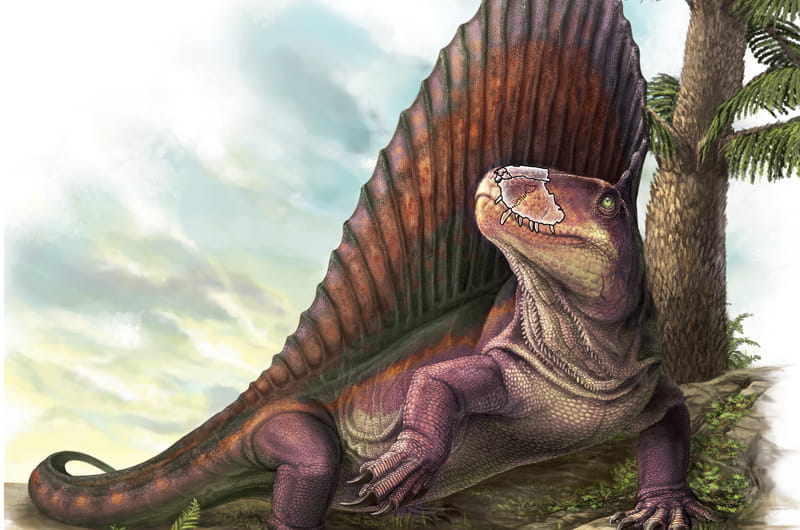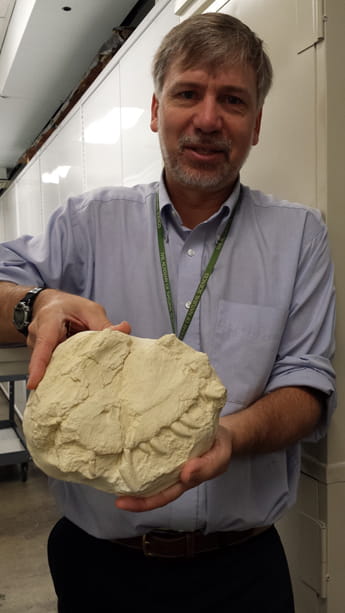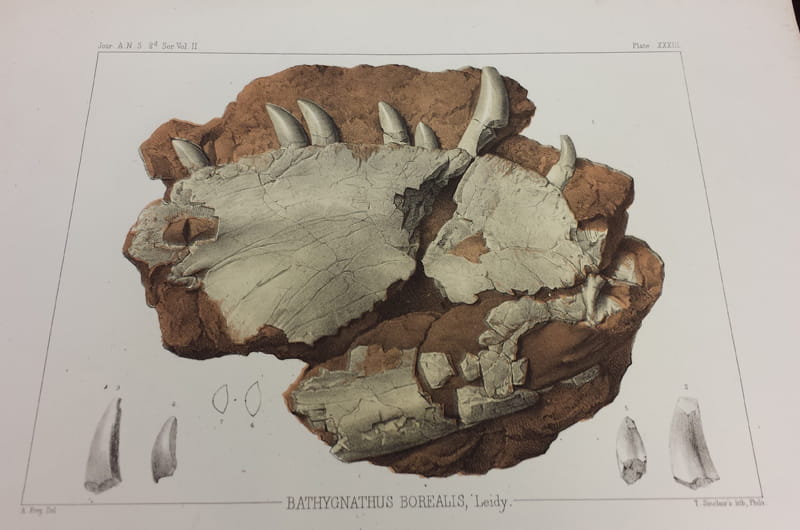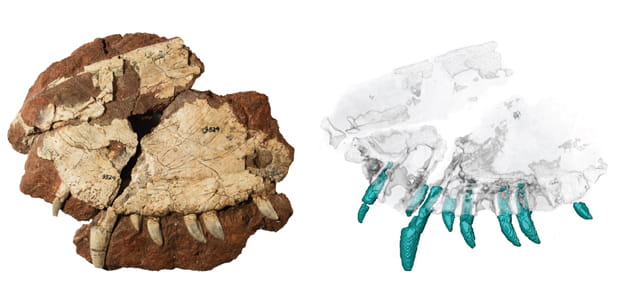A Dimetrodon By Any Other Name
 By Frank Otto
By Frank Otto

- Drexel Selects New, World-Class Life Sciences Building at 3201 Cuthbert Street for Medical Research Operations
- Breakthrough on Gene Therapy for Hereditary Spastic Paraplegia
- Drexel Environmental Collaboratory Releases Cross-Sector Findings on Severe Weather Recovery Challenges
- Drexel Launches the Manuel Stamatakis Center for Alternative Investments at the LeBow College of Business

For more than 160 years, a segment of a jawbone with serrated, inches-long teeth has resided on a shelf at the Academy of Natural Sciences of Drexel University under one name: Bathygnathus borealis.
But like many of the millions of specimens at the Academy, this 270-million-year-old fossil still had a story to impart. And that story was that it was the fossil of a creature that has a little more name recognition.
Researchers from the University of Toronto Mississauga, Carleton University and the Royal Ontario Museum, led by Kirstin Brink, PhD, used the Academy’s fossil specimen to determine that Bathygnathus borealis was not actually a unique species but instead belongs to the genus Dimetrodon, a “mammal-like reptile” that lived 40 million years before the first dinosaurs.

“By scanning the fossil, they were able to zero in on unique features of this specimen that we’ve suspected for a long time,” explained Ted Daeschler, PhD, the Academy’s vice president for collections and one of the guardians of the extensive fossil collection. “The images they were able to develop allowed them to say ‘This is a pelycosaur, specifically Dimetrodon.’”
The Canadian team’s discovery was published in the Nov. 23 issue of the Canadian Journal of Earth Science.
Featured in (albeit crudely) the 1959 movie “Journey to the Center of the Earth” and many children’s toys, Dimetrodon was a four-legged animal that had a spiny “sail” of skin stretching from the back of its neck to its tail area.
One of the animal’s key features, which is on display in the Academy’s fossil, is serrated, inches-long teeth meant for ripping flesh. Dimetrodon is believed to be the first land-based animal to sport these “ziphodont” teeth.
When the fossil was taken to Canada with the researchers last year, it was something of a homecoming. The jaw was initially discovered in Canada on Prince Edward Island in 1845. A farmer named McLeod was digging a new well when the fossil was discovered nine feet down nestled in red sandstone.

With no natural history museum in Canada at the time, the specimen was sold to Joseph Leidy, a prominent paleontologist and curator of the Academy at the time.
Leidy presented it at an Academy scientific meeting on Oct. 18, 1845 declaring its provenance, what he believed it to be, and what he would name the piece.
“He called it Bathygnathus borealis, which means deep jaw from the north, basically,” said Daeschler, who is also an associate professor in Drexel's College of Arts and Sciences. “That’s how it was back then. They just stood up at those meetings and presented. Now, we’d do a much more detailed description.”
Flash forward to 2014, when the Canadian researchers were given the Academy’s go-ahead to bring the jaw back north and scan it to determine its internal anatomy.

Between the scans and the eight preserved teeth in the jaw, the researchers found the evidence they needed to change the classification of the fossil to Dimetrodon.
In biological circles, the chronological order of naming is usually given precedence. Bathygnathus predates Dimetrodon, but this is a case where the rule can be bent.
“If the name change would create some disruptive issues, you can go with the one that is better known,” Daeschler said. “So, in the next Academy of Natural Sciences publications, it will say Dimetrodon borealis.”
Every 30 years or so — “a generation, really,” according to Daeschler — some researcher comes along to look again at the Bathygnathus-now-Dimetrodon jaw, sparked by a new interest to find out what they can. Many specimens at the Academy have a similar story: interest that peaks every few years and inspires discovery.
“The jaw has this long history, dating back to Leidy,” Daeschler said. “But that’s typical here. This collection provides a wealth of information that can be tapped for years and years.”
In This Article
Contact
Drexel News is produced by
University Marketing and Communications.